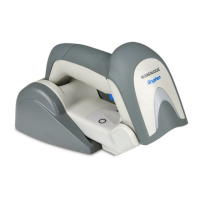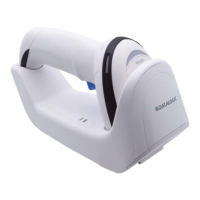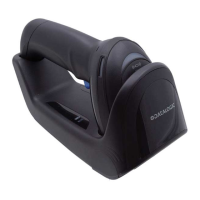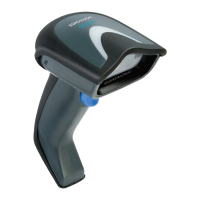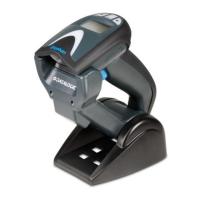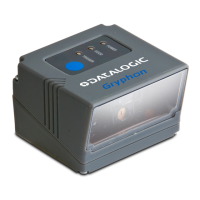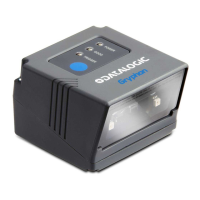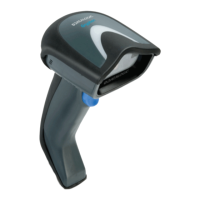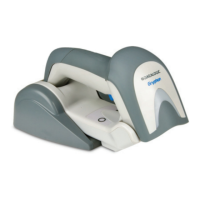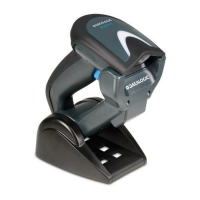
Do you have a question about the Datalogic Gryphon I GBT4400 and is the answer not in the manual?
| Wavelength | 650 nm |
|---|---|
| Scanner type | 2D |
| Yaw reading angle | -40 - 40 ° |
| Tilt reading angle | 0 - 360 ° |
| Light levels (direct sunlight) | 0 - 100000 lx |
| Input voltage | 4.5 - 14.0 V |
| Battery capacity | 2100 mAh |
| Number of reads per charge | 60000 |
| Bluetooth | Yes |
| Dimensions (WxDxH) | 71 x 100 x 181 mm |
| Certification | China RoHS, EU RoHS, IEC 60825 Class 2 |
| Product color | Black |
| LED indicators | Charging, Power |
| Storage temperature (T-T) | -20 - 70 °C |
| Operating temperature (T-T) | 0 - 50 °C |
| Operating relative humidity (H-H) | 0 - 95 % |
| Weight | 245 g |
|---|
Identifies the reader's primary function and form factor.
Provides context on manual conventions, overview, and related publications.
Lists resources like PRG, QRG, and Aladdin Configuration application.
Outlines support channels including website, reseller, and telephone.
Covers reader models, programming methods, and ergonomic design.
Instructions for checking contents and retaining packaging for service.
Guides the reader through initial setup for host communication.
Detailed instructions for connecting via RS-232, Keyboard Wedge, and USB.
Covers base station positioning, connection to host, and securing power cords.
Procedures for establishing wireless connectivity between handheld and base station.
Guides selecting and scanning interface bar codes for host connection.
Options for fine-tuning reader settings beyond basic interface configuration.
Explains the logical grouping of parameters for reader customization.
Configuration settings specific to communication interfaces like RS-232 and USB.
Covers Data Format and Reading Parameters applicable across interfaces.
Options for configuring 1D and 2D symbologies, including families and features.
Details Baud Rate, Data Bits, Stop Bits, Parity, and Handshaking Control settings.
Covers Wedge Quiet Interval, Intercode Delay, Caps Lock State, and Numlock.
Explains Scan Modes, Stand Mode Indication, Stand Operation, and Pick Mode.
Provides detailed physical attributes of the GD44XX and GBT4400 models.
Outlines battery type, charge times, operating autonomy, and power supply.
Details scanning illumination, aiming source, angles, field of view, and depth of field.
Lists all supported 1D and 2D symbologies, including configurations.
Shows typical representations of common 1D barcode types like UPC-A, EAN-13, Code 39.
Displays typical representations of 2D barcode types like Aztec, Datamatrix, PDF417.
Explains emulation modes for control characters across different interface types.
Defines key combinations for sending labels to the host.
